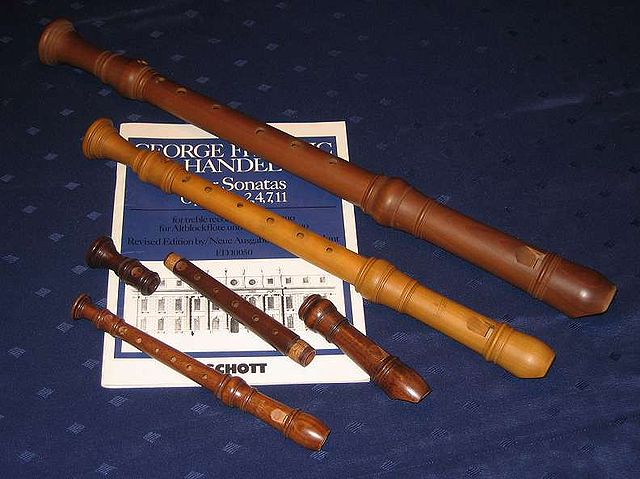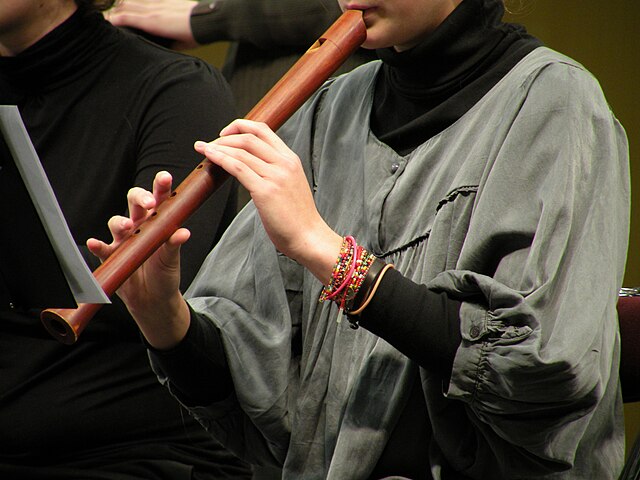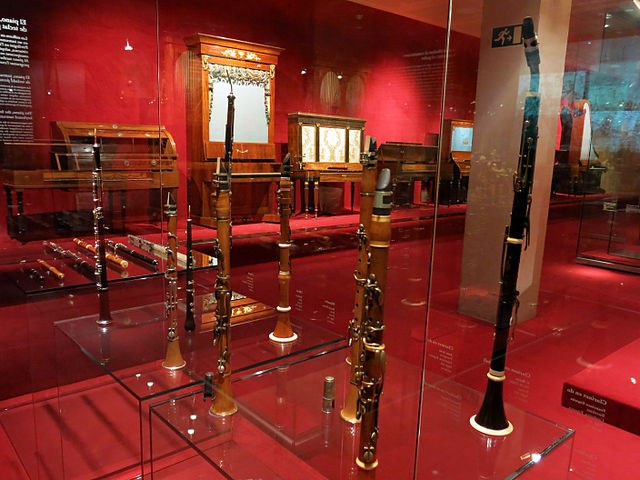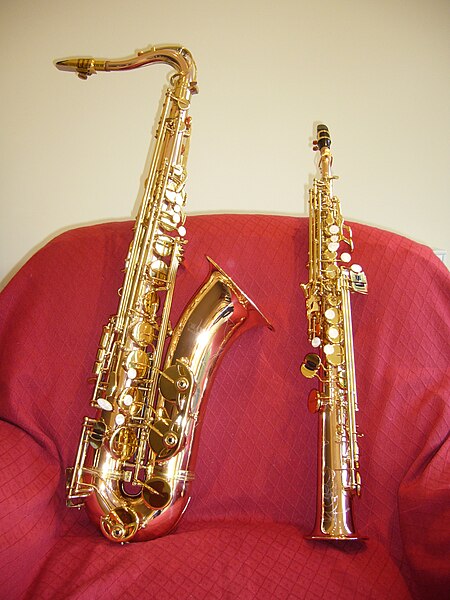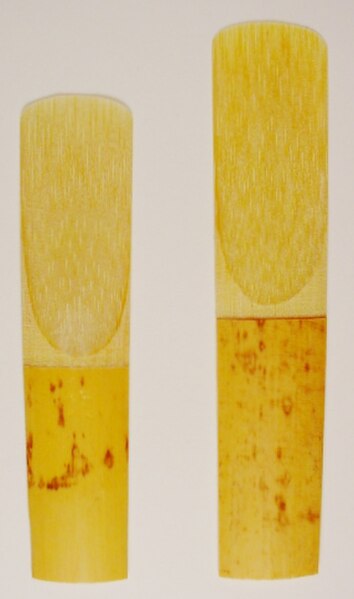Recorder (musical instrument)
The recorder is a family of woodwind musical instruments in the group known as internal duct flutes: flutes with a whistle mouthpiece, also known as fipple flutes. A recorder can be distinguished from other duct flutes by the presence of a thumb-hole for the upper hand and seven finger-holes: three for the upper hand and four for the lower. It is the most prominent duct flute in the western classical tradition.
Various recorders (second from the bottom disassembled into its three parts)
Recorder with German fingering. Note that the 4th finger-hole is larger than the 5th.
A musician playing a recorder
Illustration of a man playing a recorder, from Jacques Hotteterre, Principes de la Flute Traversiere, de la Flute a Bec, et du Haut-bois, 1707
Woodwind instruments are a family of musical instruments within the greater category of wind instruments. Common examples include flute, clarinet, oboe, bassoon, and saxophone. There are two main types of woodwind instruments: flutes and reed instruments. The main distinction between these instruments and other wind instruments is the way in which they produce sound. All woodwinds produce sound by splitting the air blown into them on a sharp edge, such as a reed or a fipple. Despite the name, a woodwind may be made of any material, not just wood. Common examples of other materials include brass, silver, cane, and other metals such as gold and platinum. The saxophone, for example, though made of brass, is considered a woodwind because it requires a reed to produce sound. Occasionally, woodwinds are made of earthen materials, especially ocarinas.
Woodwind instruments at the Museu de la Música de Barcelona.
Tenor and soprano saxophones
Alto and tenor saxophone reeds
A piper playing the bagpipes in Newport, Rhode Island

